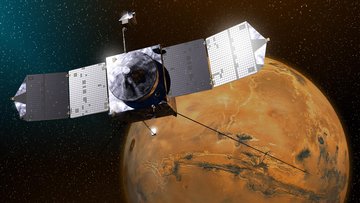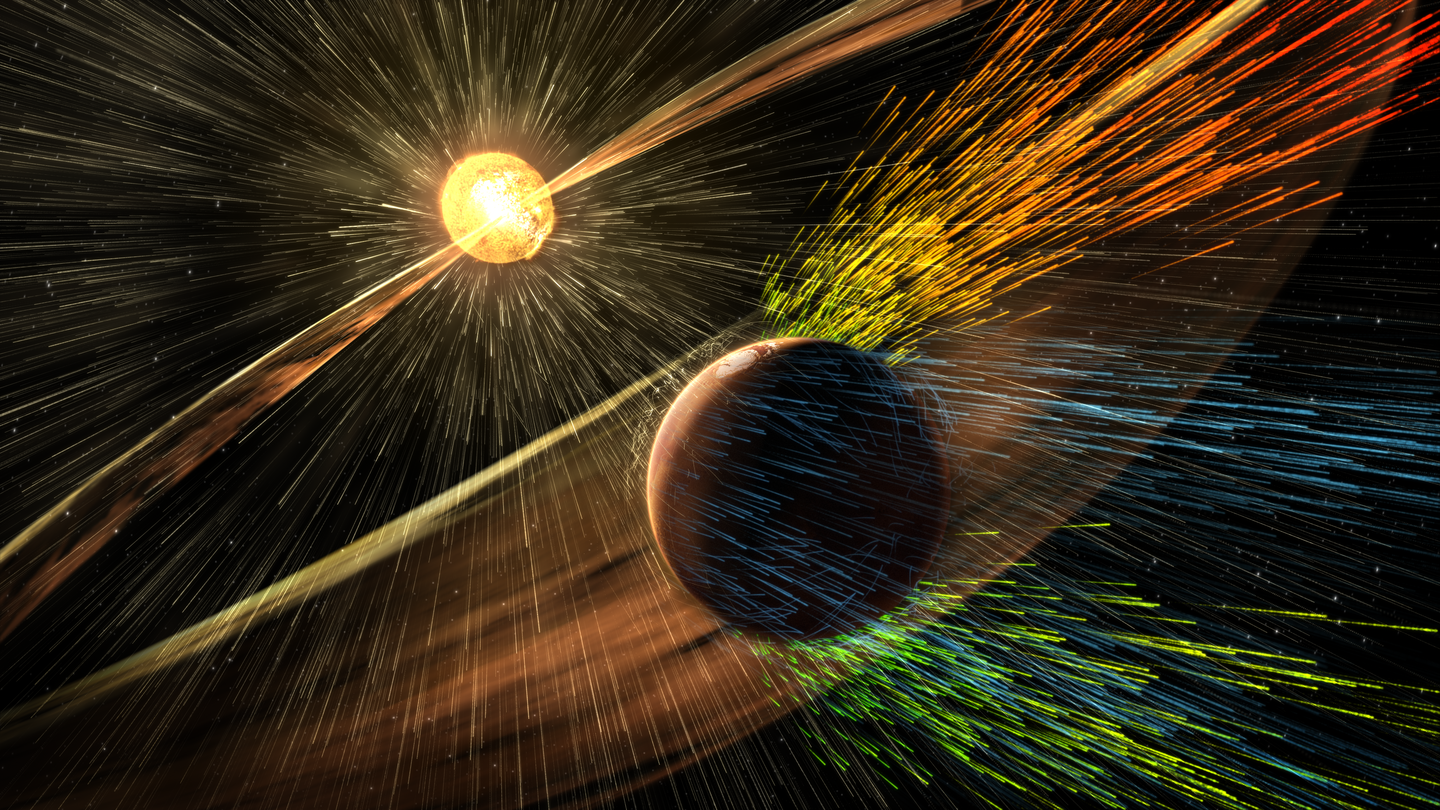Different types of aurorae occur on Mars. One of them is intermittent aurora: it glows with ultraviolet radiation, lasts for a short time and is limited to small areas. Researchers have now found clear evidence of the exact cause of this phenomenon: the interaction between the solar wind and the magnetic surface causes the Martian atmosphere to glow. They published their results in the Journal of Geophysical Research: Space Physics.
The core of Mars no longer produces a magnetic field like Earth's. However, there are areas on its surface with strong magnetic fields, generated by the planet's crust. Researchers believe the magnetic crust is a remnant dating back to the time when the Martian core created a magnetic field encompassing the entire planet. At that time, the still-liquid surface was lined up with the existing magnetic field; After the rock cooled, it retained this magnetism. Auroras often occur over areas with strong magnetic fields.

The MAVEN space probe in front of Mars
The hypothesis of a research team led by Charles Powers, then working at the University of Michigan in Ann Arbor, is that a process called magnetic reconnection plays a role in the formation of these auroras. The magnetic fields of the solar wind and the magnetosphere combine temporarily. This directs electrically charged particles from the solar wind into the atmosphere. There they stimulate the molecules to glow, thus causing the northern lights. To test this hypothesis, the team examined data from the Mars Atmosphere and Volatile Evolution Orbiter (MAVEN), a spacecraft designed to explore the Martian atmosphere. Its spectrometer captured images of the incomplete aurora at different locations and times. In addition, the magnetometer examined the strength and structure of the magnetic field on Mars.
The northern lights are at the border of magnetic fields
The researchers used this to create a map of magnetic fields across almost the entire planet and pinpoint the respective epicenter of the aurora. When they compared magnetic fields to the centers of auroras, they discovered something in common: auroras often occur where two magnetic regions are adjacent to each other. The magnetic fields there point in two opposite directions: one area points to the North Pole, the other to the South Pole. The northern lights appeared most active when the solar magnetic field lines were also running parallel to one of these regions — and these conditions favor magnetic reconnection. In the study, Powers and his team examined 49 patchy auroras; 42 of them occurred in such areas.
The results of this new study support the researchers' hypothesis and explain previously unknown observations of the aurora. At the same time, they make it possible to better predict future auroras on Mars and other planets. New insights into the interaction between the solar wind and the Martian atmosphere are also helping researchers understand how Mars lost a significant portion of its atmosphere.

“Social media evangelist. Baconaholic. Devoted reader. Twitter scholar. Avid coffee trailblazer.”








More Stories
Longest jets in the universe discovered – giant particle streams as long as 140 Milky Way galaxies in a row
New method reveals 307 supernova remnants
Snapchat is upping the ante on augmented reality glasses